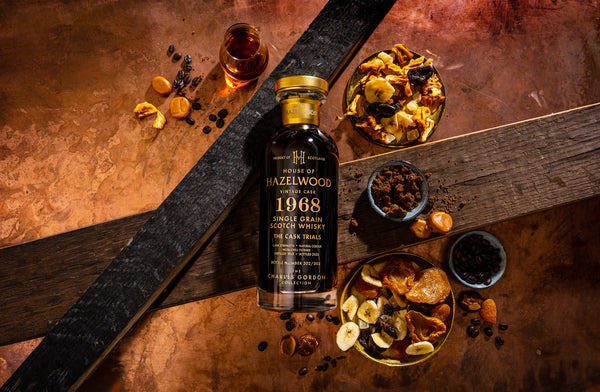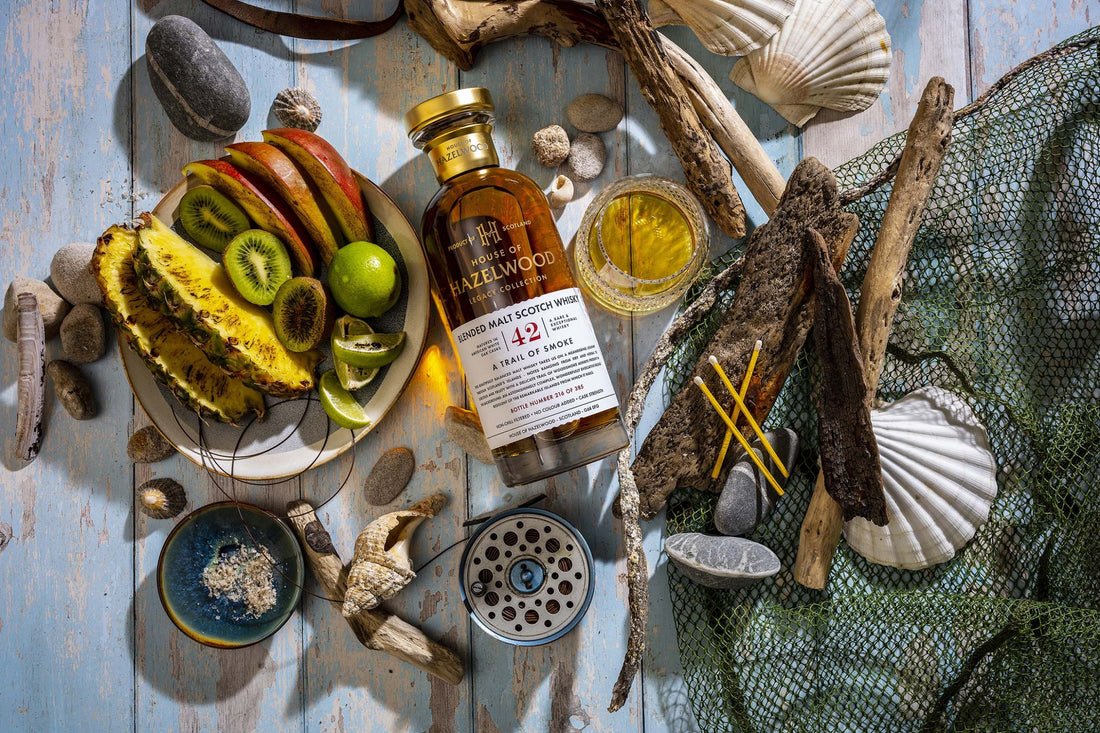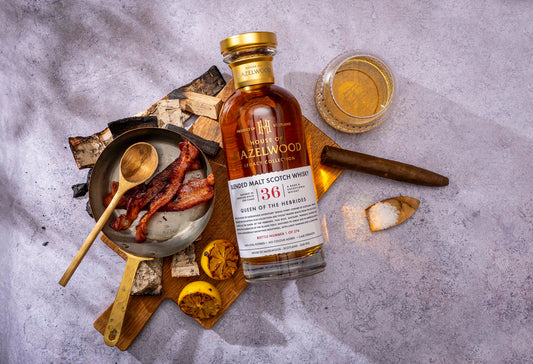Whisky is a vibrant and exciting part of Scottish History. But of course, for something so highly desired and celebrated, comes the emergence of tall tales and whisky myths which may dissuade the discerning drinker.
Scotland has always enjoyed a rich relationship with the fantastical. From proudly proclaiming our national animal as the unicorn, to gleefully sharing stories of hauntings with the latest generations – it really should come as no surprise that with such a rich tapestry of telling tales, that this mythology is interwoven in all aspects of our cultural DNA.
Of course, Scotch is no stranger to such speculation, and over time a menagerie of whisky myths has formed – some of which, could stunt or inhibit the enjoyment of the golden nectar. We’re here to help you separate the truth from fallacy and fable and debunk some of the most common misconceptions.
Whisky Myth #1 – Blended Whisky is Inferior to a Single Malt
Perhaps the most painful myth of all for whisky makers: the concept that a single malt is superior in every way compared to its blended counterpart.
This whisky myth began to garner traction in the latter half of the 20th century, as producers moved to focus on the production of a single malt product. Marketers pitched the arrival of a commercially available single malt as a more flavourful alternative to the standard blend, and gradually over a matter of years, demand began to grow with consumers making the switch.
Beyond clever marketing, blends have been sullied with a few perception problems over the years – the first being the use of grain as the cereal base in whisky production to control and keep costs down. This, combined with a collective memory of the questionable (and in some cases barely palatable) mainstream blends associated with the 19th century that were consumed at the end of a hard and laborious working day, and it is easy to see how beliefs have developed to view the product as a less elegant and refined product.
Of course, the truth about blended whisky could not be more different –the marriage between a malt and grain whisky is in fact something that is to be celebrated as this is something that only the most skilful of blenders can confidently turn their hand to, choosing each component based on its ability to complement and enhance the flavours within – a depth that arguably would be difficult to achieve using the confines of a signature style of just one distillery.
Regardless of the initial cost of cereal used to create the grain whisky component of a blend, costs substantially increase to produce once a whisky moves into the realms of aged whisky. Slumbering in cask for decades is an indicator in the faith of the maker – and as such, costs continue to accumulate as the producer waits decades for a cask to come to full fruition. Once it reaches maturity, the results speak for themselves – offering a complexity coveted by connoisseurs.

We need look no further than The Lost Estate, a Blended Grain Scotch Whisky, to see this statement in action. Matured for 43 years in American White Oak casks, this marriage of two of Scotland’s late great grain distilleries promises esters of exceptional origin, offering up pear drops, mandarin orange and a crisp, barley sugar character – a true contender for any Single Malt challenger.
Even the very mention of the word “blended” can dissuade a tentative tippler from exploring the wider whisky category – with a Blended Malt being one of the larger casualties of caution. Less commonly available than its popular counterpart, a Blended Malt is a Malt Whisky that is made in the same way as a Single Malt – with the only difference being the malt components originate from different distilleries, instead of one single source.

Again, much like Blended Scotch, the skill required to balance and conduct the flavours within such a marriage is considerable – but the breadth in flavour as a result can be exceptionally rewarding. This diversity of taste is exemplified in A Trail of Smoke, a nuanced and lightly peated 42-Year-Old expression, offering a marriage of the very best that the Scottish Hebridean Islands has to offer.
Whisky Myth #2 – Single Grains are Always Extremely Sweet
When envisioning a Single Grain, visions of dessert-like decadence are likely to spring to mind. Grain whisky is typically produced at a larger scale via a Coffey (or Column/Patent) still for use as a tempering partner in Blended Scotch Whisky. But, from time to time, distillers will opt to create a dedicated Single Grain – that is a grain whisky produced at a single grain distillery – much to the joy of aficionados who rarely come by this opportunity of opulence.
Compared to its malted counterpart, a grain whisky is often lighter in nature, and redolent in natural characteristics of cereal and honey – thus contributing to conceptions of tasting notes not too dissimilar to clotted cream, cake, and ice cream. It is true that grain whiskies are typically sweeter than their malted counterparts – but when it comes to grains that have been left in cask over a long period of time, these properties become diminished, and replaced with characteristics of deep maturity.

Such an example is The Cask Trials – a 1968 Vintage Single Grain hailing from Girvan Distillery. While it is likely that this grain began with all the voracious vigour of a young Girvan grain, an extensive period of aging in a single Sherry Butt has given way to a character, which if tasted blind, you could be forgiven for identifying the liquid as a well-aged malt.
As this originally light and delicate spirit has slumbered over four centuries, the tannins and oxidisation within the European Sherry Butt have concentrated the flavours within, resulting in a rich and intense presentation of roasted coffee, chewy toffee, and Muscovado sugar. Owing to its origin as a grain spirit, the flavours are carried effortlessly at a cask strength ABV of 49.2%. As a result, a little goes a long way with this expression – of which may have yielded less fervour if it had been laid to sleep as a malted new make spirit.
Whisky Myth #3 – First Fill Casks are the Best
In the same way some may hold strong opinions on the category of blended whisky, a common misconception is the idea that whiskies that are matured in anything other than a first fill cask will be less flavoursome.
This is often born of the notion that a cask that has been used for maturation multiple times will lose its robustness and ability to impart flavour – but the role of second and third fill casks in the maturation of a well-aged whisky is in fact pivotally important.
First fill casks are indeed typically more “active” in their nature and may be used to impart a wide variety of flavours quickly onto relatively young spirit, but in the instance of Scotch which is aged for decades at a time, extended contact with oak wood will impart tannins, which if not carefully managed, can easily overpower a whisky as it matures.

For this reason, producers often opt for second or third fill casks where aged whisky is concerned as the rate at which esters develop is far more easily controlled and adapted as the whisky ages up. The Next Chapter, a 50-Year-Old Blended Scotch Whisky from the Charles Gordon Range is a testament to this having followed an unconventional maturation path. Distilled in 1972, this expression was matured to what was considered “near perfection” initially in European and American Oak, however, at the point of bottling, rather controversially the whisky maker opted for a lengthy secondary maturation, porting the contents into active ex-bourbon barrels for a further decade and a half.
The resulting whisky is immensely complex in its nature, displaying a toffee sweetness, before bringing to the fore a curious breeze of floral blossom. The palate is as equally delightful, offering up Seville orange and marmalade citrus – a reminder that careful consideration can open the door to the next chapter.
Whisky Myth #4 – If Whisky is Cloudy, It Has Spoiled
Have you ever left a glass of whisky to the side for a while, only for it to develop a haze? Perhaps you have added water to your Copita, and in only a mere minute the golden drops within had fogged up?
Cosmetically, this louching may be less than appealing, but the good news is what has occurred is a completely harmless chemical reaction in response to a colder temperature, also known as “chill haze”. This hazing occurs when whisky under an alcoholic strength of 46% ABV encounters a substance that is distinctly colder – for instance, ice or water. The hazing witnessed is the visible process of fatty acids and esters sticking together – of which would usually not be visible.

This type of hazing has been a challenge for the commercial production of whisky for decades – with many drinkers naturally becoming alarmed at the appearance of cloudiness and returning to store under the impression the whisky is faulty.
In response to this, many mainstream producers employ the use of chill-filtration to eliminate this hazing effect. This method of filtration sees the whisky cooled to a lower temperature before the spirit is passed through a filter to remove the haze. Some connoisseurs will actively avoid whiskies which have been chill filtered due to a belief that this can strip out essential oils and esters – however, there is little conclusive scientific evidence to support this.
That being said, as part of our whisky making ethos, every House of Hazelwood expression is presented with minimal intervention to offer Scotch that as is close to have been taken from the cask within the warehouse itself – this may be at a natural cask strength, free from added colour or without chill-filtration.
Whisky Myths: Treading Carefully with Tall Tales
In an industry that is so well-loved and celebrated globally, it is almost expected that so many questionable statements and insights should pop up from time to time. If you’re seeking to invest in your whisky collection, but are wary of where to begin, our Concierge team is on hand to reassure, help you make your selection and debunk any potential whisky myths you may be worried about – just simply ask.




